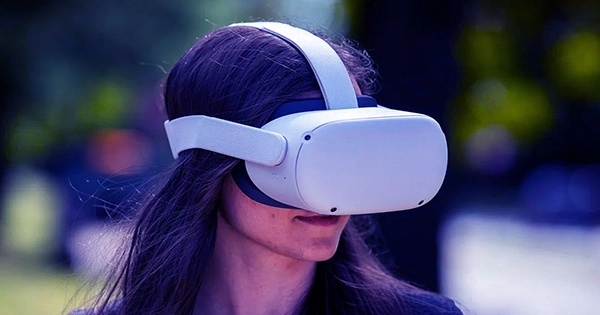Meta, formerly known as Facebook, has announced its plans to release glasses with a “viewfinder” display and a neural interface smartwatch by 2025. This ambitious plan involves creating new technologies that can integrate seamlessly with our daily lives and enable us to interact with digital content in a more natural and intuitive way.
The glasses with a “viewfinder” display will offer users a new way to see and interact with digital content. This display will be integrated into the glasses themselves, allowing users to view information, notifications, and other content without the need to look down at a separate device. This hands-free approach will enable users to remain engaged with the world around them while also staying connected to their digital lives.
The neural interface smartwatch is also an exciting development from Meta. This device will use advanced neural interfaces to allow users to control various functions of the watch using their thoughts. This technology has the potential to revolutionize the way we interact with our devices, making it easier and more intuitive than ever before.
Overall, Meta’s plans for glasses with a “viewfinder” display and a neural interface smartwatch are exciting developments that have the potential to change the way we interact with digital technology. While 2025 may seem like a distant future, the pace of technological advancement means that we may be closer to these innovations than we realize.
Meta smart glasses: The Verge reports that Meta’s Reality Labs division held a private presentation on upcoming hardware on Tuesday. Second-generation Ray-Ban Stories, which are sunglasses with a camera and microphone, will be available this autumn in the smart glasses market.
Third-generation smart glasses will have a “viewfinder” display in 2025 (previously a year later) that can scan QR codes, show inbound communications, and translate text in real time. The Verge reports that control will be accomplished with the aid of a “neural interface” band, which “allows the wearer to operate the glasses through hand motions, such as swiping fingers on an imaginary D-pad.”
In the future, he claimed, the band will enable the user to use a virtual keyboard and write at a speed comparable to that of mobile phones.
Brain-computer interface (BCI) technology from CTRL-Labs will also be offered on a smartwatch that can be linked to the glasses. An almost GoPro-like watch with a detachable frame and camera was discontinued by Meta last year.
Eventually, he said the band will let the wearer use a virtual keyboard and type at the same words per minute as what mobile phones allow.
MR meta headphones: A Quest 3 that costs more than the present $399 model will be released this year. It will have front-facing sensors, be “at least twice as powerful,” and be two times thinner. With the help of 41 new apps and games and pass-through features, it will provide mixed-reality experiences.
A more cost-effective headgear dubbed Ventura might be released the following year, and an advanced “La Jolla” headset will follow.
Google is allegedly developing a mixed reality device called “Project Iris” for the 2024 market. However, the collaboration with Samsung and Qualcomm is the more recent evolution. The latter will supply the processor for a Samsung XR device, whose form factor is presently undetermined and which will run an enhanced version of Android.
















